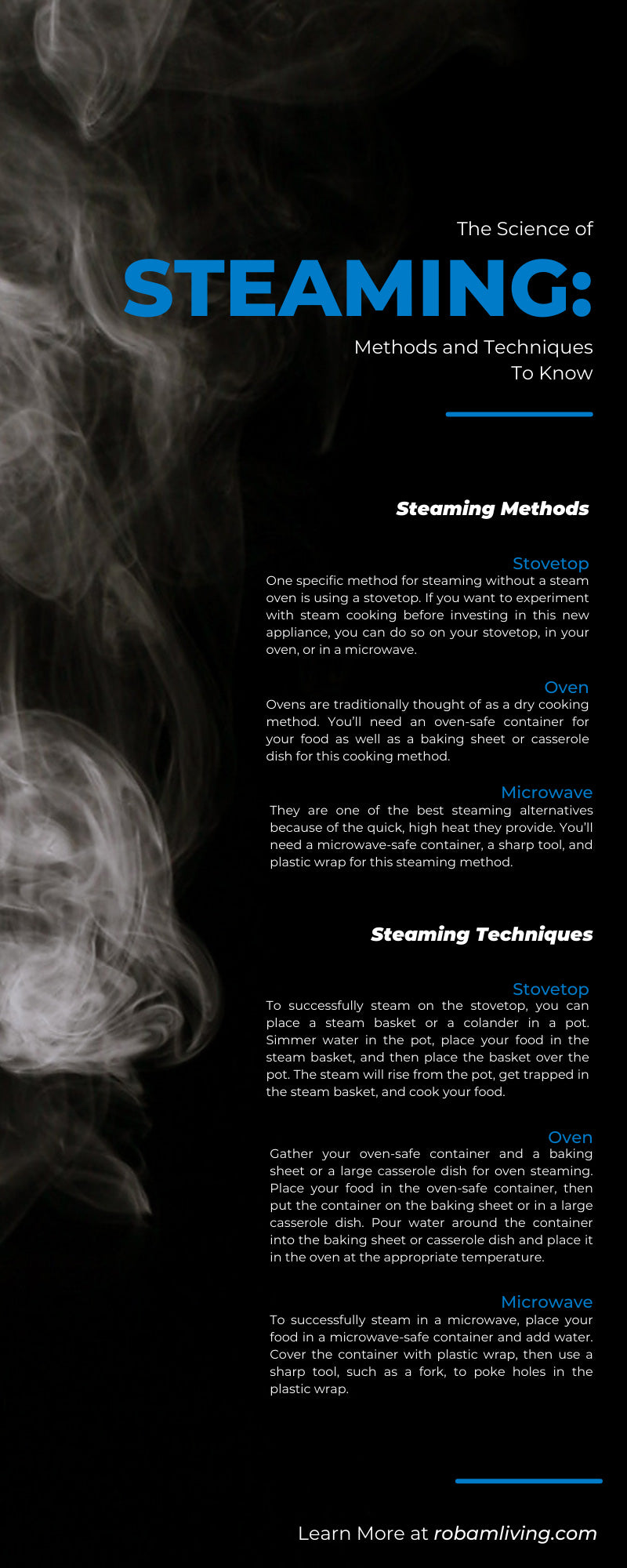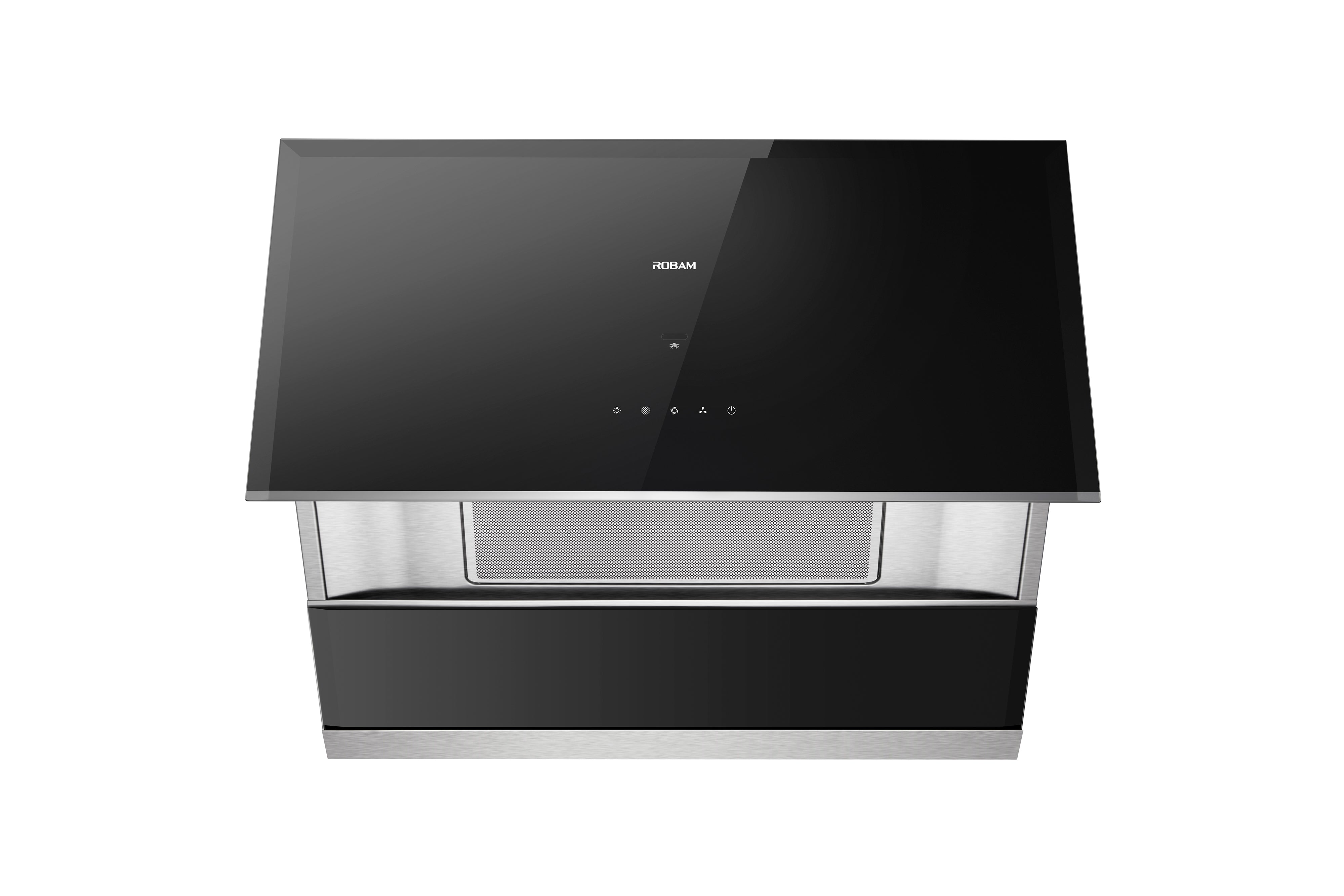There are various cooking methods that enable you to make something delicious. One of the best cooking methods that keeps your food naturally delicious is steaming. While many people know about steaming, they don’t understand the science behind it or the various methods and techniques involved. We’ve compiled some basic steaming facts as well as techniques and methods for you below.
Basics of Steaming
Before we can get deep into techniques and methods, you need to know the basics of steaming. Steaming is a cooking method that uses moist heat from boiling water to cook food. When water boils at a certain temperature, it vaporizes into steam, which is hot enough to heat and cook food.
Most steam cooks food at about 212 degrees Fahrenheit. At first glance, this seems like a low temperature. Trying to cook food in a 212-degree oven would take forever, and many people would worry that the food wasn’t cooked enough to destroy dangerous bacteria. However, since steam is moist and in a hot, confined area, you can trust that steam cooking will thoroughly and safely cook whatever you want.
Steaming Advantages
Now that you understand the basics of steaming, you can better understand the advantages of this cooking method. Since steaming is a moist cooking method, not dry like an oven, it doesn’t require the grease and oils of other cooking methods. Leaving these unhealthy oils out of your meals means that your food is healthier and cleaner.
Vitamins and Minerals
Another reason steamed food is healthier is it retains more vitamins and minerals. Other cooking methods can deplete your food, especially vegetables, of the vitamins and minerals you need to stay healthy. Since steaming is so gentle, it leaves most of those vitamins and minerals in your food.
Flavors and Colors
Not only does steam keep vitamins and minerals in your food, but it also keeps the natural flavors and colors in your food. Most Americans are so accustomed to overprocessed foods that we forget how naturally delicious vegetables, meats, and carbs are. Gentle steam cooking helps your food keep its flavor so you can enjoy it.
Saving Space
The last major advantage of steam cooking over other types is how much space it saves in your kitchen. Other cooking methods, such as roasting in an oven or boiling on a stovetop, require you to have large appliances in your kitchen. Steam cooking requires only a countertop steam oven or a steaming basket to use on a stovetop. If you don’t have a steaming basket, you can steam with other devices on your stovetop, in your oven, or in a microwave.
Steaming Methods
The easiest way to steam food is in a steam or combination oven. With this method, you can set the oven as necessary. Most of these convenient appliances have multiple settings and functions so you can steam at various levels or use alternative cooking methods such as air frying or baking. Some even have built-in recipes to help guide you as you steam food for the first time.
Stovetop
One specific method for steaming without a steam oven is using a stovetop. If you want to experiment with steam cooking before investing in this new appliance, you can do so on your stovetop, in your oven, or in a microwave. To steam on your stovetop, you can invest in a steam basket or use a colander and a pot. We have the specific technique for stovetop steaming below.
Oven
Ovens are traditionally thought of as a dry cooking method. How, then, can you successfully use this cooking method to steam? The answer is that the oven provides the heat while you provide the water that will become steam within that heat. You’ll need an oven-safe container for your food as well as a baking sheet or casserole dish for this cooking method.
Microwave
Microwaves also give you the option to easily steam food in your home. While many people think that steaming in a microwave is the same as using a steam oven, that’s not true. Steam ovens are roughly the same size but allow for more precise temperature control. However, you can steam in a microwave if you don’t have a steam oven yet. They are one of the best steaming alternatives because of the quick, high heat they provide. You’ll need a microwave-safe container, a sharp tool, and plastic wrap for this steaming method.
Steaming Techniques
Steam cooking is one type of cooking method, and within that are the various methods we listed above. Each allows you to steam with whatever appliances you have available. Each of these methods requires a specific technique as well so you can successfully steam. These techniques have more steps and require more tools than the easiest method, which is cooking with a steam oven. However, you can still successfully steam cook without a steam oven if you follow these techniques.
Stovetop
To successfully steam on the stovetop, you can place a steam basket or a colander in a pot. Simmer water in the pot, place your food in the steam basket, and then place the basket over the pot. The steam will rise from the pot, get trapped in the steam basket, and cook your food.
To steam without a basket, find a heat-safe colander. Simply place a colander containing your food over the simmering pot and cover the colander with an appropriately sized lid. This will also trap the steam around the food so it can cook properly.
Oven
Gather your oven-safe container and a baking sheet or a large casserole dish for oven steaming. Place your food in the oven-safe container, then put the container on the baking sheet or in a large casserole dish. Pour water around the container into the baking sheet or casserole dish and place it in the oven at the appropriate temperature. The oven should trap the heat, so you shouldn’t need to cover the dish containing your food, but some recipes may tell you to do so. Use your discretion to decide which method is best.
Microwave
To successfully steam in a microwave, place your food in a microwave-safe container and add water. You don’t need to completely cover your food with water; you just need enough to steam the amount of food in the container. Cover the container with plastic wrap, then use a sharp tool, such as a fork, to poke holes in the plastic wrap. This will allow some of the steam to escape so the plastic doesn’t explode off the container from the quick exposure to high heat.
The science behind steaming is fairly simple: hot water vaporizes into steam which heats and cooks food when trapped. The methods and techniques you should know are the ones that allow you to cook with whatever appliances and tools you have available. However, the best and easiest steaming method is using a combi oven. ROBAM provides combination steam ovens that allow you to steam with the push of a button.




















